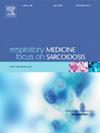A patient journey map for people living with autoimmune pulmonary alveolar proteinosis
IF 3.5
3区 医学
Q2 CARDIAC & CARDIOVASCULAR SYSTEMS
引用次数: 0
Abstract
Introduction
Patients with autoimmune pulmonary alveolar proteinosis (PAP) face a complicated journey (physically, emotionally, and financially) to receive the correct diagnosis and treatment. We developed a patient journey map (PJM) to describe the experiences and needs of patients with autoimmune PAP in the USA.
Methods
This PJM was developed in four stages: (1) analysis of existing literature; (2) patient advisory board meetings (n = 7); (3) an online survey (n = 19); and (4) a validation workshop (n = 6).
Results
Four phases of the patient journey were identified: (1) symptoms and experience before diagnosis; (2) diagnosis; (3) treatment; and (4) ongoing monitoring. Patients reported heterogeneous and indirect diagnostic pathways, often waiting months or years for the correct diagnosis. The majority reported at least one misdiagnosis, most commonly pneumonia. Treatment pathways varied substantially, and current treatments and off-label therapies were frequently described as burdensome, emotionally taxing, and/or financially worrisome. Patients described their journey as an “emotional rollercoaster,” especially during pre-diagnosis and treatment. Patients reported common barriers to care, particularly insurance problems and access to expert care. Patients specifically cited the need for improved education on autoimmune PAP within the medical community and increased help with insurance challenges related to current treatments.
Conclusions
This PJM provides insights on patients’ journeys with autoimmune PAP. Patients reported inconsistent, burdensome, and circuitous journeys. This PJM provides the medical community with valuable information on patients’ needs and increases awareness of this rare disease. Over time, these factors may improve diagnosis, treatment, and the holistic experience of patients with autoimmune PAP.
求助全文
约1分钟内获得全文
求助全文
来源期刊

Respiratory medicine
医学-呼吸系统
CiteScore
7.50
自引率
0.00%
发文量
199
审稿时长
38 days
期刊介绍:
Respiratory Medicine is an internationally-renowned journal devoted to the rapid publication of clinically-relevant respiratory medicine research. It combines cutting-edge original research with state-of-the-art reviews dealing with all aspects of respiratory diseases and therapeutic interventions. Topics include adult and paediatric medicine, epidemiology, immunology and cell biology, physiology, occupational disorders, and the role of allergens and pollutants.
Respiratory Medicine is increasingly the journal of choice for publication of phased trial work, commenting on effectiveness, dosage and methods of action.
 求助内容:
求助内容: 应助结果提醒方式:
应助结果提醒方式:


